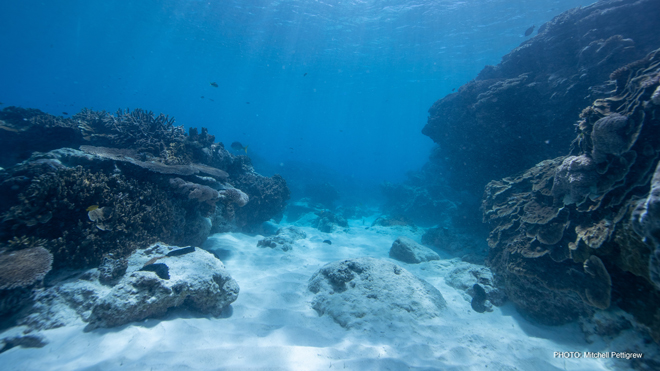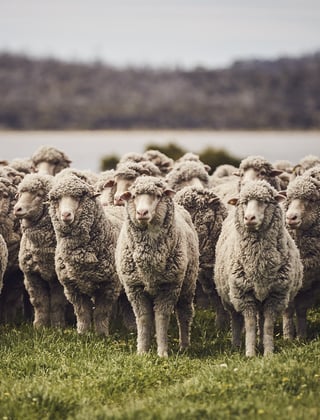Fact: wool biodegrades in marine environments

The results of recent AWI-funded research into the biodegradability in marine environments of different fibre types were published in April in a peer-reviewed journal, adding extra scientific credibility to the positive research results for wool.
As previously reported in Beyond the Bale, AWI-funded research has shown that machine-washable wool fibres as well as untreated wool fibres readily biodegrade in the marine environment, in contrast to synthetic fibres that do not. The research also found no evidence to support the idea that the Hercosett resin used as part of the machine-washable wool treatment forms microplastic pollution.
The results of the research, undertaken by AgResearch, were published in April in a peer-reviewed journal, adding extra credibility and access to the research results.
The samples used in the study were sourced from comparable lightweight base-layer fabrics, each made from the six fibre types being studied: two types of Merino wool (machine washable wool and untreated wool), viscose rayon, and three synthetic fibres: polyester, nylon and polypropylene.
The study showed that both types of wool biodegraded to a high degree, as did the cellulose-based viscose rayon. Synthetic fibres showed little or no biodegradation. Significantly, the scientists did not detect any formation of microplastic polyamide fragments resulting from the biodegradation of machine-washable wool. The Hercosett resin used in the machine-wash treatment for wool is very different from common commercial polyamides.
The results of the research were published in April in an open access paper (available free on the internet) titled Marine Biodegradation Behavior of Wool and Other Textile Fibers in the international journal of environmental pollution Water, Air, & Soil Pollution.
“The publishing of this research helps demonstrate the eco-credentials of wool in a world where there is increasing concern about the seemingly ubiquitous contamination of the environment by synthetic textiles,” said AWI Program Manager, Fibre Advocacy & Eco Credentials, Angus Ireland.
“The study adds to the growing body of scientific evidence that recommends an increased use of natural, non-synthetic materials, such as wool, in global textile markets.”
- Angus Ireland, AWI Program Manager
The research is part of a larger body of work by AWI towards better accounting for the use phase in Life Cycle Assessment (LCA) of apparel, such as that proposed in the European Union’s Product Environmental Footprint (PEF) project.
“Natural fibres such as wool readily biodegrade and consequently don’t amass in the environment. This important difference between natural and synthetic fibres needs to be accounted for in the PEF methodology for it to be credible and scientifically defensible,” Angus added.
“AWI’s research results are being used by the Make the Label Count campaign to urge the European Commission to create a level playing field by including microplastic emissions in its PEF methodology.”
Raising consumer awareness about microplastic pollution
World free-diving champion Alice Modolo and influencer Azza Slimene in Marseille learning about microplastic pollution (left), and a screenshot of Alice Modolo from the video on GenZ channel Brut (right).
As part of the roll out of its Filter by Fabric campaign in France, The Woolmark Company last year organised a two-day press trip to Marseille to highlight and explain to a group of influencers in the fashion industry the impact of microplastic pollution from textiles on the world’s marine ecosystems.
The trip was organised in collaboration with the No More Plastic foundation and sportswear brand MOVER. Free diving world champion Alice Modolo also attended the trip and demonstrated the prevalence of plastic waste she encounters in the ocean.
The influencers, who have more than four million followers on Instragram, also learnt how wool readily biodegrades in a marine environment and does not contribute to microplastic pollution, which is good news for the planet and the wool industry.
The trip resulted in 94 social media posts that received nearly three-quarters of a million impressions (the number of times that the posts were seen).
“The trip to Marseille was eye-opening and impactful! Surrounded by the beauty of the Mediterranean Sea, it was sobering to witness firsthand the severe microplastic pollution affecting such a stunning environment,” posted influencer Azza Slimene, who has 1.8 million followers.
“Standing against textile microplastic fibres in a region deeply affected by this pollution was a powerful statement of our commitment to a cleaner, more sustainable future for fashion and our planet.”
- Azza Slimene, influencer
The Woolmark Company in France also collaborated with Brut, a news outlet producing short videos popular with GenZ in France, to educate its viewers about microplastic pollution. The video received nearly one million views and strong engagement from the BRUT community.
This article appeared in the June 2024 edition of AWI’s Beyond the Bale magazine. Reproduction of the article is encouraged.














